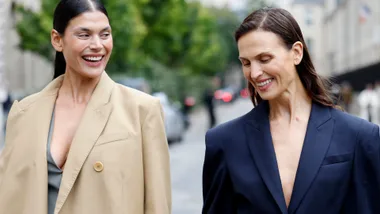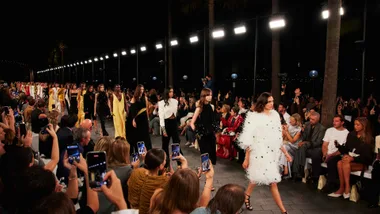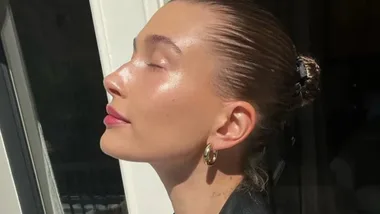I’ve never been ashamed or embarrassed about having lip filler. In fact, the first thing I often hear from people when I tell them is: “Really? Your lips don’t look fake.” And, to them, I explain that I pay a fair chunk of change not to look fake and the same goes for most people who opt for cosmetic injections.
That’s not an attempt to overlook the effect that reality stars and Instagram filters have on our perceptions of self. The Kylie Jenner effect is, unlike her pout, undeniably real and we need to take more care to celebrate diversity. To focus on the words coming out of our mouth rather than what we see in the mirror. But I would be a hypocrite if I didn’t disclose my own dalliance with lip injections – which for the record make me feel good.
When it comes to cosmetic surgery, my thoughts vacillate between wanting to break down the stigma by encouraging honest discussion and wishing I had never told anyone about my lips. Mostly, I brush the judgemental comments off with a wry comment however it can be taxing.
Yet, I firmly believe the more we know, the more we’re empowered to make healthy decisions. Whether you like it or not cosmetic surgery is on the rise with no signs of abating. Each year, Australians spend approximately $1 billion on cosmetic treatments. At a per capita rate, that is 40 per cent more than Americans.
What are these procedures enticing people to make significant changes in how they look? How far are people willing to go? Here, Jasmine Laredo Advanced Cosmetic Injector (RN) at FacePlus MediSpa‘s Bondi Junction clinic answers the most common questions about lip injections, explaining everything to expect before your first treatment.
mc: What kind of role do you think social media has played in the popularity of lip fillers?
JL: “There has been always a clear correlation between celebrity enhancements and an increase in injectable procedures. However, even at a non-celebrity level we now see filtered photos of ourselves daily via the social media platforms which tend to make us more critical of our own appearance, therefore increasing our consideration for enhancements such as lip fillers.
“Social media has also removed the stigma surrounding cosmetic injectables, with many celebrities and influencers talking openly online about their experiences, and reasons for treatment, which is, therefore, normalising procedures like this. For the cosmetic injectables industry, this equates to an increasing number of patients undergoing treatments each year.”
mc: What is the biggest myth around cosmetic injections?
JL: “9/10 first time lip patients will start the consultation with ‘I don’t want duck lips’! However, when treated by an injector who values proportions and correct ratios a lip treatment should always keep people guessing as to whether you have or haven’t undergone the needle.”
mc: What is the secret to looking ‘enhanced’ rather than fake?
JL: “Ensuring your injector values natural-looking results by checking out their previous work online and by looking closely at the injector themselves! If they pride themselves on delivering the natural look it is likely they will look natural also.
“When I have a patient who is wanting enhancement I like to focus on highlighting their natural beauty and best features and building on this.”
mc: What is used for lip fillers?
JL: “Lip filler is synthesised from a naturally occurring moisture-binding molecule that we have naturally occurring in our bodies called ‘hyaluronic acid’ (HA) but don’t let the word ‘acid’ fool you, this wonderful ingredient keeps the skin plump and hydrated. The only other ingredient in the gel apart from the HA is some local anaesthetic that is mixed into the formula to make it more comfortable during treatment.”
mc: How long do lip fillers last?
JL: “Lip fillers can last anywhere from 3-12 months depending on internal and external factors in addition to how much, and the thickness of the product you have had injected, how often, and whether it is your first time. First-time filler never seems to last as long as subsequent top-ups so I always advise my patients to be prepared to ‘build’ their volume.”
mc: Does it hurt?
JL: “The lips are certainly one of the more sensitive areas of the face, however when properly prepped with topical numbing cream and ice the procedure is very tolerable for most patients. This is extremely variable however depending on pain tolerance. I have some clients who say they don’t feel a thing and some who genuinely struggle. I would describe the feeling like a ‘quick pinch’ to begin with, then the local anaesthetic mixed with the gel will begin to take effect and provide added comfort to the patient.”
mc: What is the aftercare plan with lip fillers?
JL: “I always provide extensive aftercare advice to my lip filler patients as it is an area that is prone to more swelling than other areas of the face that are treated with fillers. I always recommend no alcohol or exercise for 24 hours post lip filler as this can increase the severity of bruising and swelling and prolong these side effects. Intermittent icing is also encouraged to reduce bruising and swelling. I also advise them that they are going to be the most swollen within the first 24-48 hours and not to get too hung up on the size or shape within this time as it is mostly swelling and I always like to see them for a complimentary follow up in 1-2 weeks so I can ensure perfection when the swelling has resolved.”
mc: What does having your fillers dissolved involve?
JL: “Dissolving filler involves a process in which an enzyme called hyaluronidase is injected into the previously filled area in order to break down the hyaluronic acid molecules. Most of this process will occur in the first 24 hours however there may be some residual swelling or bruising from the procedure for a few more days. After your injector is happy that the lip (or other areas) is back to its virgin state it can then be re-filled properly.”
RELATED: Does Dermaplaning (Aka Facial Shaving) Actually Work?










